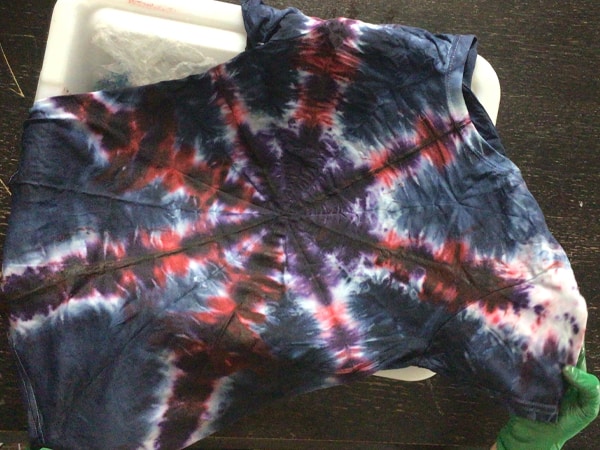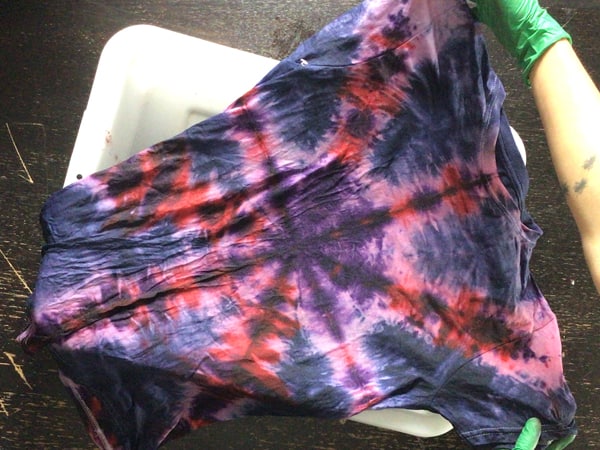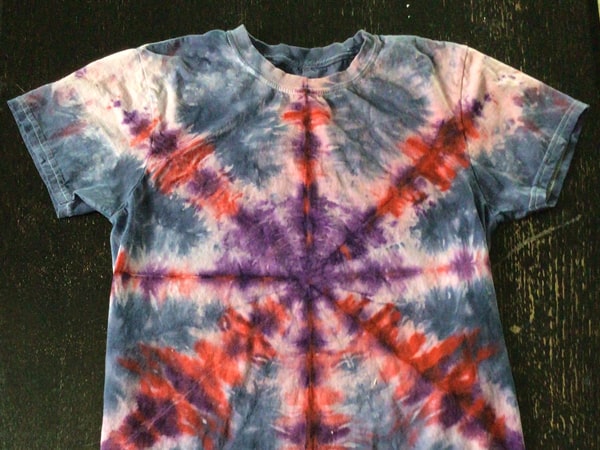Rit dyes* are family-friendly fabric dyes. They do not require any special prep or chemicals to work. Because of this, you can simply grab the fabric you want to dye, tie and dye, and see the final result within hours. This convenience does come with a bit of a drawback though. Rit dyes are not a colourfast as their more professional counterparts.
*This article contains affiliate links. This means if you purchase a product through one of the links with an asterisk (*) I will get a small commission at no extra cost to you. This is how I cover the cost of running a website and can continue to create content. Read more about the companies I work with here.
What is Colorfastness?
Colorfastness refers to the ability for dye to stick to the fabric and stay there even after repeated washes and uses.
Chemical dyes use chemical process to get the dye to stick to the fabric. The fabric is presoaked in a chemical to activate this process and left to sit to set the dye as the chemicals do their thing. Once the chemical process is finished the excess dye can be washed out. The excess dye will not stain the leftover white areas since the chemical reaction is no longer active and you are left with bright vibrant colors and true white where the dye was not set.
Chemical dyes hold up very well after many washes showing barely any fading at all even after years of use. There are lots of types of chemical dyes each with a slightly different process but this is a general outline of how it works.
Rit dye however stains on contact but needs heat to set the colors well. This means that Rit dyes should either be dyed with very hot dyes, like dip dyeing on the stovetop or heat set after dyeing. Using the microwave to heat set Rit dyes is the easiest and most effect way to do it.

newly unwraped t-shirt 
rinsed 
rinsed and washed
Even after heat setting the dye the colors will run when the excess dye is rinsed out staining the white areas. The colors will also be slightly less vibrant than with chemical dyes and fade faster over time.
Are Rit dyes still worth using?
Yes! You can still get beautiful dye projects with Rit dyes. In fact, Rit dye is my dye of choice for things like family projects, tie dye parties, and tie dye experimentation because of the simplified process and quicker results. They are also the most available dye at local stores making them super easy to get.
How to Get The Best Results With Rit Dyes
Use the right dye for your fabric and follow the instructions
There are different types of Rit dyes for different types of fabric so make sure you are getting the right product for your fabric. It is also important to read the label for additives that will help the dye hold with particular types of fabric.
The two types Rit dyes are:
- Rit All-Purpose Dye – Used for cotton, rayon, linen, blends with less than 35% synthetic fabric, nylon, silk, and wool. Add salt to dye for cotton, rayon, linen, and blends and add vinegar to dye for nylon, silk, and wool.
- Rit DyeMore for Synthetic Fibers – Used for for synthetic fabrics like polyester, acrylic, acetate, and blends that contain more than 35% synthetic fibres.
Use compatible colors
Rainbow tie-dye looks awesome when the colors are bright and vibrant but with Rit dyes, it can be very hard to keep the colors from running into each other. Anyone who knows about mixing colors will know that anytime colors from across the color wheel are mixed you will get a muddy color especially in the white areas. Because of this, projects with “incompatible” colors often get a dull or off look.
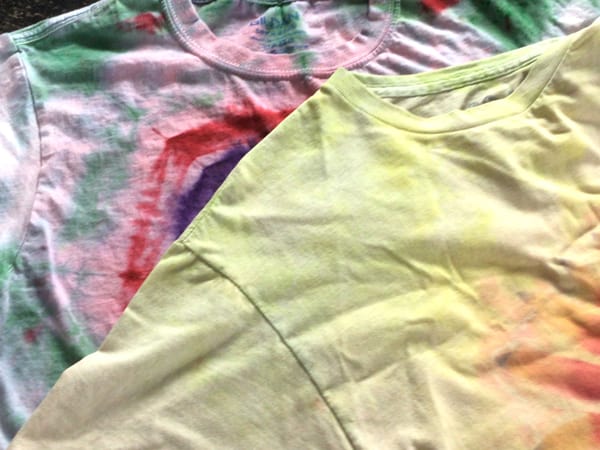
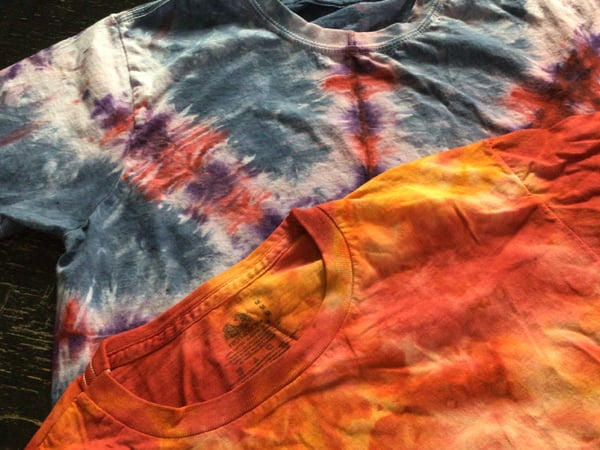
Choosing colors that are next to each other on the color wheel will ensure that even as colors run, you will be left with bright “pretty” shades. Rit dyes come in countless shades and can be mixed to get even more shades but a good guideline to start with is these combinations:
- Blue, purple, red
- Red, orange, yellow
- Blue, green, yellow
Some colors run and stain more than others. Red seems to be very bad for staining while the staining with green is pretty mild. This means that combinations of orange, red, and purple work well since both orange and purple still look good when red runs and that experimenting with “risky” color combinations without red will give you better success.
There may be times when you want the colors to be muddy. The muted creamy colors that come from certain color combinations can make great tie dyes. Not everyone wants the bright 60’s style dyes.
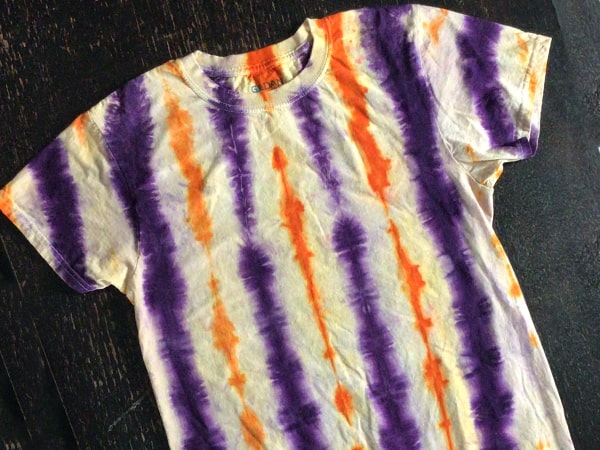
So carefully consider colors when planning your design and let yourself experiment with color keeping these guidelines in mind.
Carefully rinse the shirt
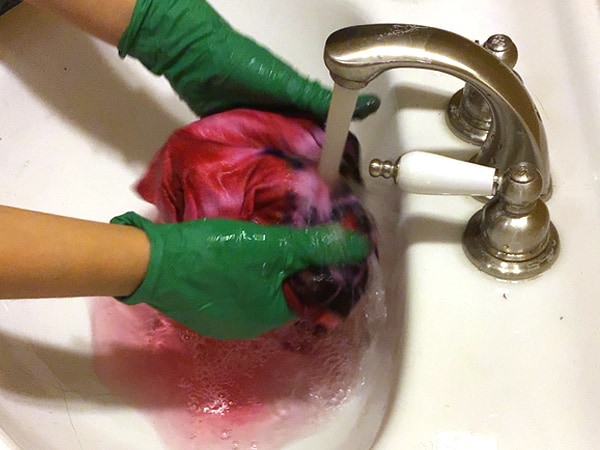
Always rinse in cold running water first since hot helps the color set. Once the water is running clear you can rinse it in warm color to get a bit more out before washing. I usually do this in the sink but outdoors with a hose works well too.
If you really want the white to be as bright as possible you can keep the shirt tied while doing the first rinse. This will not prevent all the staining but it will help reduce it since a lot of the dye will be removed while the whites are still protected. Once the water is running clean open up the shirt and continue rinsing.
Set realistic expectations
When I started exploring tie dye I watched lots of YouTube tutorials. Although I learned a lot from the many talented teachers, they all were using chemical dyes and that I cannot expect the same final result with Rit dyes. I make sure to plan my project taking into account that the colors will run a bit. In fact, the somewhat muted look of Rit dyes can be an asset making work different but just as beautiful as their chemical dye counterparts.
Heat Set
Heat setting the dye is a crucial step in the process. Here are three ways to heat set Rit dyes.
Microwave:
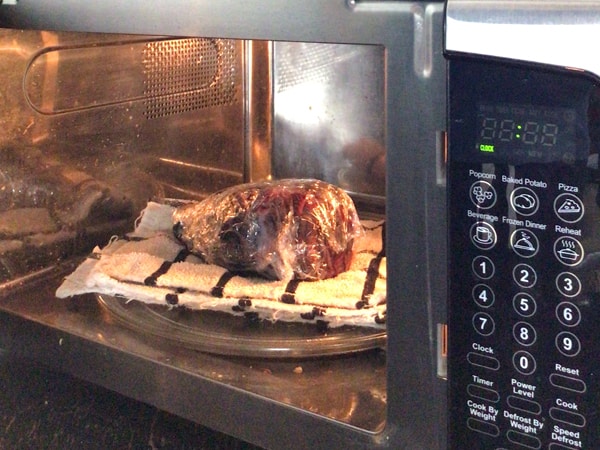
Wrap the still wet tied project in plastic wrap and place it on a paper towel or cloth in the microwave. heat it on high for 2 minutes. This is my recommended method because it is super easy and effective. CAUTION: If your project has any metal parts (such as zippers or buttons) then you cannot use this method.
Steamer:
Wrap the wet, still tied project in newspaper and place it in a steamer with a lid. Boil the water and let the steam heat the project. If water drips on the project you can end up with water spots so make sure the project is covered with a thick layer of newspaper. It is also important that the dyed project does not sit in the water.
Sun:
Place the wet dyed project in a sealed plastic bag and place it in the hot sun for an entire day. This method will only work on a hot sunny day, it takes a long time, and will not reach the high temperatures of other methods but it still works better than nothing.
Final Thoughts – A Few More Things To Consider When Dying With Rit Dyes
- Never use anything for dyeing that you will later use for food. This applies to bowls, steamers, pots, tongs, or anything else you use.
- Rit dyes stain skin and surfaces so wear gloves, old clothes, and protect surfaces.
- Be cautious on the first few washes after dyeing. The colors may run in the washing machine and stain other items.
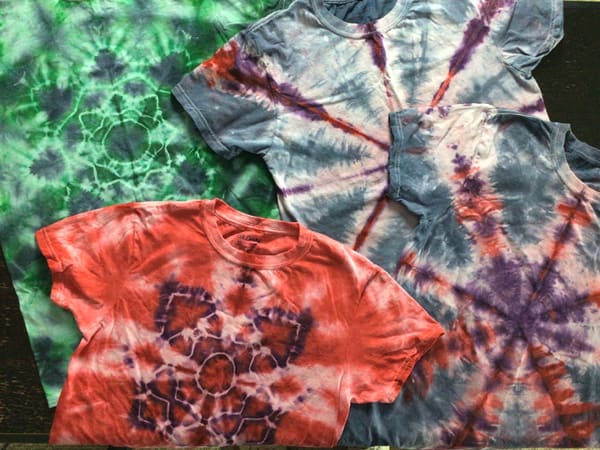
If you want to try out Rit dyes and support my blog consider getting some from Create For Less. I will get a small commission for the sale at no extra cost for you.
